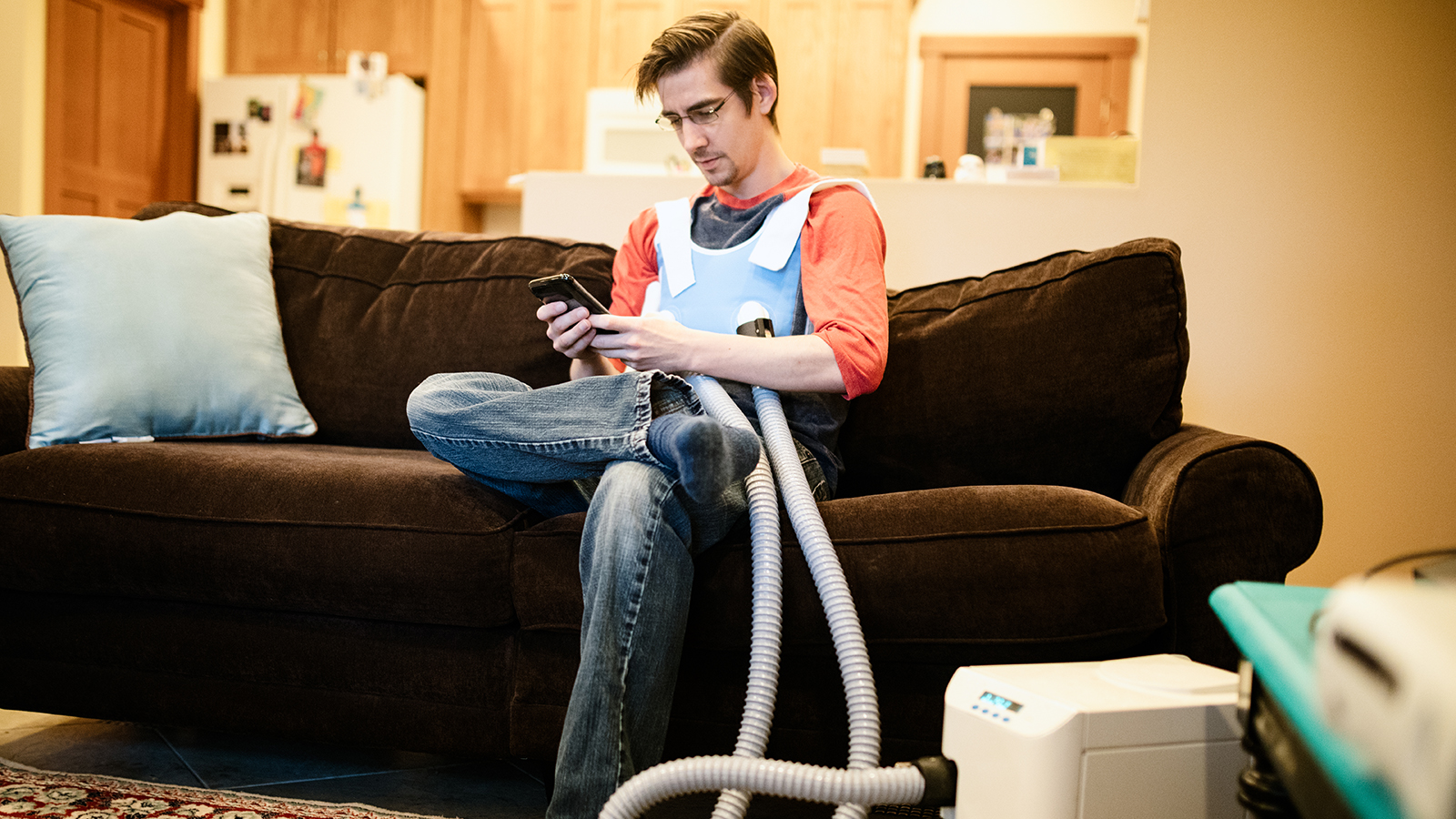Airway clearance techniques

Cystic fibrosis (CF) can affect many organs. But it mainly affects the lungs. People with CF have thick mucus in their lungs. It’s often hard to cough up. This makes it hard to keep the lung airways clear. People with CF can get lung infections. These can lead to lung tissue damage.
It’s very important to do your airway clearance techniques, or ACTs. Do these regularly. ACTs use movement or devices to help you cough. This helps get rid of mucus in lungs.
There are several ways to help clear airways. What’s best is different for each person.
Here are some of the most common ACTs. Learn how they help clear airways. These can make breathing easier.
Chest physiotherapy (CPT) or postural drainage with percussion (PD&P)
Use different body positions. This lets gravity work to help drain mucus from around the lungs. A caregiver or partner can help. They can clap or vibrate your chest. This helps loosen mucus from smaller airways. It moves it so it’s easier to cough up.
Positive expiratory pressure (PEP) or oscillating positive expiratory pressure (OPEP)
Use a mask or handheld mouthpiece. This lets air flow easily into the lungs. But it resists air flow when you blow out. They’ll need to work hard to exhale. This helps air get behind the mucus. It’s easier to cough up. Some PEP devices are called oscillating devices. They vibrate when you breathe out. This helps move mucus.
Active cycle breathing technique (ACBT)
Use three different breathing techniques together. These help clear lung mucus. There are three parts of this technique:- Breathing control helps your airways relax. With normal breaths, you breathe in through your nose and out your mouth.
- Breathe deeply. These are called chest expansion exercises. They help get air behind the mucus. Breathe out normally.
- Cough (forced expiration technique) for different lengths of time. Cough until the mucus is huffed out of the lungs.
Intrapulmonary percussive ventilation (IPV)
Use a nebulizer. This pushes bursts of air into your lungs. The bursts loosen mucus from your airway walls. A mist helps make mucus less sticky.
High frequency chest wall oscillation (HFCWO)
Use an inflatable vest attached to a machine. It quickly inflates and deflates. The vibrations help move mucus. Then it’s coughed out.
Autogenic drainage (AD)
Also called self-drainage. Use different speeds of breathing to move mucus. You’ll learn how to breathe in, hold your breath and cough in different cycles.
Mechanical insufflator-exsufflator
Use a machine and a mask or mouthpiece. This sends a deep breath into your lungs. It then sucks out the air. This helps loosen mucus. It’s easier to cough out.
Exercise also helps keep airways clear. Exercise doesn’t replace ACT. But it can help.
Work with your CF treatment center to find techniques right for you. Your treatment center will suggest ACTs based on:
- Your lifestyle
- Daily schedule
- Other factors
Your treatment center will teach you how to do the techniques. Then, you can do them at home. ACTs are often combined with medications. These include antibiotics and bronchodilators. In general, take bronchodilators before ACTs. Use inhaled antibiotics after ACTs. Follow the routine set by your treatment center.
This information is not a substitute for medical advice or treatment. Talk to your doctor or health care provider about your medical condition and prior to starting any new treatment. CVS Specialty assumes no liability whatsoever for the information provided or for any diagnosis or treatment made as a result, nor is it responsible for the reliability of the content.
CVS Specialty does not operate all the websites/organizations listed here, nor is it responsible for the availability or reliability of their content. These listings do not imply or constitute an endorsement, sponsorship, or recommendation by CVS Specialty.
